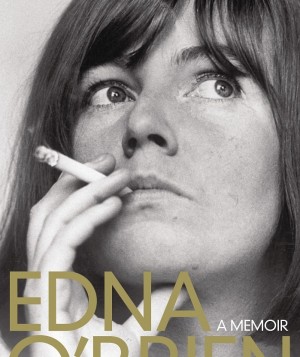Looking through a “Gloss” Darkly: Edna O’Brien Walks a Long Blue Road in Black Suede Shoes
Although she tried once — after her children have flown the nest, O’Brien leaves London in hopes of putting down roots not in her home village, where gossip and drink made love to the frigidity of Catholicism, but in a “secret corner” of northern Donegal, “where families had lived for decades.” But once again, the emerald gem eludes her. Arsonists and threatening letters eventually drive her out of her pink mansion teetering on the craggy cliffs overlooking the sea. “What did I envisage as I stood there?” she asks. “Nice neighbors, getting to know the many facets of the sea, the seabirds, and perhaps a last sustained love.”
An elusive love, bonny Ireland…
O’Brien’s motherland serves as an extended metaphor for her second most difficult and trying love: her mother. Hers was a difficult labor, and as O’Brien has been told, she was such an ugly baby that she was hidden under a quilt when neighbors came to visit. “Such is the ragbag of anecdote, hearsay, allegory, and consternation that filled the canvas of my early life,” O’Brien recounts. It is this sifting through memories, words and images — “at once beautiful and frightening, tender and savage” — that catapults her into bouts of melancholy and resignation, including fantasies of taking her own life, as two of her revered authors — Virginia Woolf and Sylvia Plath — had done.
At a young age, she tries to bond with her distant mother, finding the choicest moments to be when her father has gone off on another of his drinking bouts. O’Brien’s lyrical realism lures us into the drawing room, where we can see her vividly: “Sitting on my mother’s lap, smelling her smell, feeling the itch from the wool of her cardigan, the particular heave of her chest, I studied every feature of her face, which was so beautiful to me, except for the forehead, a map of wrinkles and on that map I wrote my first words, in praise of her.”
Lena O’Brien was suspicious of literature. “Paper never refused ink,” she was fond of saying. It comes as no surprise, then, that her daughter’s exploration of Joyce and Sean O’Casey infuriates her; when her mother is about to burn a borrowed copy of O’Casey’s autobiography, O’Brien recalls, “I begged her and I hated her.” Such were the origins of a widening gap that would only expand as years passed, and O’Brien, herself, became a writer whose local parish priest burned her books in the town square. Upon her mother’s death, she finds an original copy of Country Girls stowed away, offending passages blacked out with ink as if to squelch her daughter’s voice into permanent silence.
O’Brien still has the pair of scissors her mother used while working as a tailor in America. “A prized possession,” she notes, “as if between us there is still something waiting to be cut.” It seems the symbolic umbilical cord, connecting mother and child, can never truly be severed. And at least for O’Brien, the same can be said of the cord that keeps snapping her back to her motherland with the fondness, curiosity and devotion of a child:
“But in the lambent light of that August evening, with the sun going down, a bit of creeper crimsoning and latticed along an upstairs window, the whole place seemed to hold, and would forever hold, for me, regardless of bungalows or a five-star hotel, the essence of itself, the thing that gave it the sacred and abiding name of Home.”
The crispness of language is still one of O’Brien’s greatest talents — her ability to evoke raw emotion into the everyday stirs the reader to rediscover one’s own inner and outer spaces; inner and outer relationships. And it is a style that has remained with O’Brien throughout the course of her extraordinary literary career, which includes over 20 works of fiction, three books of non-fiction, and five plays.
O’Brien has been lauded with some of the most prestigious literary awards, including the Ulysses Medal, the 2011 Frank O’Connor Short Story Award, and the Irish PEN Lifetime Achievement Award. But the books that became the nonsectarian bible for so many young Western women negotiating their own paths at the dawn of the sexual revolution and women’s movement were her first: The Country Girls Trilogy. One can’t help but wonder just how much of O’Brien’s life, told amongst the pages of her memoir with a strikingly similar title, was fodder for the wild adventures of the trilogy’s best friends, Kate and Baba. Devotees won’t be disappointed. Like the daisies of O’Brien’s Irish fields, tiny similarities dot her autobiographical landscape: a schoolmate stealing flowers, a farmhand with “unwashed, yellow teeth,” a scholarship for the convent and a missing shop coat are just a few of the golden nuggets that pop up and make us smile. In a 1984 interview with the Paris Review, O’Brien denounced detractors who questioned her creative mind, “Whether a novel is autobiographical or not does not matter. What is important is the truth in it and the way that truth is expressed. I think a casual or frivolous attitude is pernicious.”
Featured image: “Country Girl” by author Edna O’Brien. Photo Courtesy of: Little, Brown and Company.

